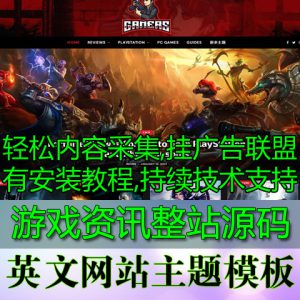在整个DDMS中体现Android NIO主要框架的要数MonitorThread.java这个文件了,有关PC和Android手机同步以及NIO非阻塞编程的精髓可以在下面的文件中充分体现出来。
final class MonitorThread extends Thread {
private static final int CLIENT_READY = 2;
private static final int CLIENT_DISCONNECTED = 3;
private volatile boolean mQuit = false;
private ArrayList<Client> mClientList; //用一个数组保存客户端信息
private Selector mSelector;
private HashMap<Integer, ChunkHandler> mHandlerMap; //这里Android123提示大家,由于在多线程中concurrentHashMap效率比HashMap更安全高效,推荐使用并发库的这个替代版本。
private ServerSocketChannel mDebugSelectedChan; //一个用于调试的服务器通道
private int mNewDebugSelectedPort;
private int mDebugSelectedPort = -1;
private Client mSelectedClient = null;
private static MonitorThread mInstance;
private MonitorThread() {
super("Monitor");
mClientList = new ArrayList<Client>();
mHandlerMap = new HashMap<Integer, ChunkHandler>();
mNewDebugSelectedPort = DdmPreferences.getSelectedDebugPort();
}
static MonitorThread createInstance() { //创建实例
return mInstance = new MonitorThread();
}
static MonitorThread getInstance() { //获取实例
return mInstance;
}
synchronized void setDebugSelectedPort(int port) throws IllegalStateException { //设置调试端口号
if (mInstance == null) {
return;
}
if (AndroidDebugBridge.getClientSupport() == false) {
return;
}
if (mDebugSelectedChan != null) {
Log.d("ddms", "Changing debug-selected port to " + port);
mNewDebugSelectedPort = port;
wakeup(); //这里用来唤醒所有的Selector
} else {
// we set mNewDebugSelectedPort instead of mDebugSelectedPort so that it’s automatically
mNewDebugSelectedPort = port;
}
}
synchronized void setSelectedClient(Client selectedClient) {
if (mInstance == null) {
return;
}
if (mSelectedClient != selectedClient) {
Client oldClient = mSelectedClient;
mSelectedClient = selectedClient;
if (oldClient != null) {
oldClient.update(Client.CHANGE_PORT);
}
if (mSelectedClient != null) {
mSelectedClient.update(Client.CHANGE_PORT);
}
}
}
Client getSelectedClient() {
return mSelectedClient;
}
boolean getRetryOnBadHandshake() {
return true; // TODO? make configurable
}
Client[] getClients() {
synchronized (mClientList) {
return mClientList.toArray(new Client[0]);
}
}
synchronized void registerChunkHandler(int type, ChunkHandler handler) {
if (mInstance == null) {
return;
}
synchronized (mHandlerMap) {
if (mHandlerMap.get(type) == null) {
mHandlerMap.put(type, handler);
}
}
}
@Override
public void run() { //本类的主要线程
Log.d("ddms", "Monitor is up");
try {
mSelector = Selector.open();
} catch (IOException ioe) {
Log.logAndDisplay(LogLevel.ERROR, "ddms",
"Failed to initialize Monitor Thread: " + ioe.getMessage());
return;
}
while (!mQuit) {
try {
synchronized (mClientList) {
}
try {
if (AndroidDebugBridge.getClientSupport()) {
if ((mDebugSelectedChan == null ||
mNewDebugSelectedPort != mDebugSelectedPort) &&
mNewDebugSelectedPort != -1) {
if (reopenDebugSelectedPort()) {
mDebugSelectedPort = mNewDebugSelectedPort;
}
}
}
} catch (IOException ioe) {
Log.e("ddms",
"Failed to reopen debug port for Selected Client to: " + mNewDebugSelectedPort);
Log.e("ddms", ioe);
mNewDebugSelectedPort = mDebugSelectedPort; // no retry
}
int count;
try {
count = mSelector.select();
} catch (IOException ioe) {
ioe.printStackTrace();
continue;
} catch (CancelledKeyException cke) {
continue;
}
if (count == 0) {
continue;
} //这里代码写的不是很好,Android开发网提示大家因为这个NIO是DDMS工作在PC端的还不明显,这样轮训的在一个while中,效率不是很高,CPU很容易占用率很高。
Set<SelectionKey> keys = mSelector.selectedKeys();
Iterator<SelectionKey> iter = keys.iterator(); //使用迭代器获取这个选择键
while (iter.hasNext()) {
SelectionKey key = iter.next();
iter.remove();
try {
if (key.attachment() instanceof Client) { //判断收到的key的附件是否是Client的实例
processClientActivity(key);
}
else if (key.attachment() instanceof Debugger) { //如果是Debug实例
processDebuggerActivity(key);
}
else if (key.attachment() instanceof MonitorThread) {
processDebugSelectedActivity(key);
}
else {
Log.e("ddms", "unknown activity key");
}
} catch (Exception e) {
Log.e("ddms", "Exception during activity from Selector.");
Log.e("ddms", e);
}
}
} catch (Exception e) {
Log.e("ddms", "Exception MonitorThread.run()");
Log.e("ddms", e);
}
}
}
int getDebugSelectedPort() {
return mDebugSelectedPort;
}
private void processClientActivity(SelectionKey key) {
Client client = (Client)key.attachment();
try {
if (key.isReadable() == false || key.isValid() == false) {
Log.d("ddms", "Invalid key from " + client + ". Dropping client.");
dropClient(client, true /* notify */);
return;
}
client.read();
JdwpPacket packet = client.getJdwpPacket();
while (packet != null) {
if (packet.isDdmPacket()) {
// unsolicited DDM request – hand it off
assert !packet.isReply();
callHandler(client, packet, null);
packet.consume();
} else if (packet.isReply()
&& client.isResponseToUs(packet.getId()) != null) {
// reply to earlier DDM request
ChunkHandler handler = client
.isResponseToUs(packet.getId());
if (packet.isError())
client.packetFailed(packet);
else if (packet.isEmpty())
Log.d("ddms", "Got empty reply for 0x"
+ Integer.toHexString(packet.getId())
+ " from " + client);
else
callHandler(client, packet, handler);
packet.consume();
client.removeRequestId(packet.getId());
} else {
Log.v("ddms", "Forwarding client "
+ (packet.isReply() ? "reply" : "event") + " 0x"
+ Integer.toHexString(packet.getId()) + " to "
+ client.getDebugger());
client.forwardPacketToDebugger(packet);
}
packet = client.getJdwpPacket();
}
} catch (CancelledKeyException e) { //注意正确处理这个异常
dropClient(client, true /* notify */);
} catch (IOException ex) {
dropClient(client, true /* notify */);
} catch (Exception ex) {
Log.e("ddms", ex);
dropClient(client, true /* notify */);
if (ex instanceof BufferOverflowException) { //可能存在缓冲区异常
Log.w("ddms",
"Client data packet exceeded maximum buffer size "
+ client);
} else {
// don’t know what this is, display it
Log.e("ddms", ex);
}
}
}
private void callHandler(Client client, JdwpPacket packet,
ChunkHandler handler) {
// on first DDM packet received, broadcast a "ready" message
if (!client.ddmSeen())
broadcast(CLIENT_READY, client);
ByteBuffer buf = packet.getPayload();
int type, length;
boolean reply = true;
type = buf.getInt();
length = buf.getInt();
if (handler == null) {
// not a reply, figure out who wants it
synchronized (mHandlerMap) {
handler = mHandlerMap.get(type);
reply = false;
}
}
if (handler == null) {
Log.w("ddms", "Received unsupported chunk type "
+ ChunkHandler.name(type) + " (len=" + length + ")");
} else {
Log.d("ddms", "Calling handler for " + ChunkHandler.name(type)
+ " [" + handler + "] (len=" + length + ")");
ByteBuffer ibuf = buf.slice();
ByteBuffer roBuf = ibuf.asReadOnlyBuffer(); // enforce R/O
roBuf.order(ChunkHandler.CHUNK_ORDER);
synchronized (mClientList) {
handler.handleChunk(client, type, roBuf, reply, packet.getId());
}
}
}
synchronized void dropClient(Client client, boolean notify) {
if (mInstance == null) {
return;
}
synchronized (mClientList) {
if (mClientList.remove(client) == false) {
return;
}
}
client.close(notify);
broadcast(CLIENT_DISCONNECTED, client);
/*
* http://forum.java.sun.com/thread.jspa?threadID=726715&start=0
* http://bugs.sun.com/bugdatabase/view_bug.do?bug_id=5073504
*/
wakeup();
}
/*
* Process activity from one of the debugger sockets. This could be a new
* connection or a data packet.
*/
private void processDebuggerActivity(SelectionKey key) {
Debugger dbg = (Debugger)key.attachment();
try {
if (key.isAcceptable()) { //处理Server响应这个事件
try {
acceptNewDebugger(dbg, null);
} catch (IOException ioe) {
Log.w("ddms", "debugger accept() failed");
ioe.printStackTrace();
}
} else if (key.isReadable()) { //如果是收到的数据,则可读取
processDebuggerData(key);
} else {
Log.d("ddm-debugger", "key in unknown state");
}
} catch (CancelledKeyException cke) { //记住,NIO处理这个异常,很多入门的开发者很容易忘记
// key has been cancelled we can ignore that.
}
}
private void acceptNewDebugger(Debugger dbg, ServerSocketChannel acceptChan) //这里用到了阻塞方式
throws IOException {
synchronized (mClientList) {
SocketChannel chan;
if (acceptChan == null)
chan = dbg.accept();
else
chan = dbg.accept(acceptChan);
if (chan != null) {
chan.socket().setTcpNoDelay(true);
wakeup();
try {
chan.register(mSelector, SelectionKey.OP_READ, dbg);
} catch (IOException ioe) {
// failed, drop the connection
dbg.closeData();
throw ioe;
} catch (RuntimeException re) {
// failed, drop the connection
dbg.closeData();
throw re;
}
} else {
Log.w("ddms", "ignoring duplicate debugger");
}
}
}
private void processDebuggerData(SelectionKey key) {
Debugger dbg = (Debugger)key.attachment();
try {
dbg.read();
JdwpPacket packet = dbg.getJdwpPacket();
while (packet != null) {
Log.v("ddms", "Forwarding dbg req 0x"
+ Integer.toHexString(packet.getId()) + " to "
+ dbg.getClient());
dbg.forwardPacketToClient(packet);
packet = dbg.getJdwpPacket();
}
} catch (IOException ioe) {
Log.d("ddms", "Closing connection to debugger " + dbg);
dbg.closeData();
Client client = dbg.getClient();
if (client.isDdmAware()) {
Log.d("ddms", " (recycling client connection as well)");
client.getDeviceImpl().getMonitor().addClientToDropAndReopen(client,
IDebugPortProvider.NO_STATIC_PORT);
} else {
Log.d("ddms", " (recycling client connection as well)");
// we should drop the client, but also attempt to reopen it.
// This is done by the DeviceMonitor.
client.getDeviceImpl().getMonitor().addClientToDropAndReopen(client,
IDebugPortProvider.NO_STATIC_PORT);
}
}
}
private void wakeup() {
mSelector.wakeup();
}
synchronized void quit() {
mQuit = true;
wakeup();
Log.d("ddms", "Waiting for Monitor thread");
try {
this.join();
// since we’re quitting, lets drop all the client and disconnect
// the DebugSelectedPort
synchronized (mClientList) {
for (Client c : mClientList) {
c.close(false /* notify */);
broadcast(CLIENT_DISCONNECTED, c);
}
mClientList.clear();
}
if (mDebugSelectedChan != null) {
mDebugSelectedChan.close();
mDebugSelectedChan.socket().close();
mDebugSelectedChan = null;
}
mSelector.close();
} catch (InterruptedException ie) {
ie.printStackTrace();
} catch (IOException e) {
// TODO Auto-generated catch block
e.printStackTrace();
}
mInstance = null;
}
synchronized void addClient(Client client) {
if (mInstance == null) {
return;
}
Log.d("ddms", "Adding new client " + client);
synchronized (mClientList) {
mClientList.add(client);
try {
wakeup();
client.register(mSelector);
Debugger dbg = client.getDebugger();
if (dbg != null) {
dbg.registerListener(mSelector);
}
} catch (IOException ioe) {
// not really expecting this to happen
ioe.printStackTrace();
}
}
}
/*
* Broadcast an event to all message handlers.
*/
private void broadcast(int event, Client client) {
Log.d("ddms", "broadcast " + event + ": " + client);
/*
* The handler objects appear once in mHandlerMap for each message they
* handle. We want to notify them once each, so we convert the HashMap
* to a HashSet before we iterate.
*/
HashSet<ChunkHandler> set;
synchronized (mHandlerMap) {
Collection<ChunkHandler> values = mHandlerMap.values();
set = new HashSet<ChunkHandler>(values);
}
Iterator<ChunkHandler> iter = set.iterator();
while (iter.hasNext()) {
ChunkHandler handler = iter.next();
switch (event) {
case CLIENT_READY:
try {
handler.clientReady(client);
} catch (IOException ioe) {
// Something failed with the client. It should
// fall out of the list the next time we try to
// do something with it, so we discard the
// exception here and assume cleanup will happen
// later. May need to propagate farther. The
// trouble is that not all values for "event" may
// actually throw an exception.
Log.w("ddms",
"Got exception while broadcasting ‘ready’");
return;
}
break;
case CLIENT_DISCONNECTED:
handler.clientDisconnected(client);
break;
default:
throw new UnsupportedOperationException();
}
}
}
/**
* Opens (or reopens) the "debug selected" port and listen for connections.
* @return true if the port was opened successfully.
* @throws IOException
*/
private boolean reopenDebugSelectedPort() throws IOException {
Log.d("ddms", "reopen debug-selected port: " + mNewDebugSelectedPort);
if (mDebugSelectedChan != null) {
mDebugSelectedChan.close();
}
mDebugSelectedChan = ServerSocketChannel.open();
mDebugSelectedChan.configureBlocking(false); // required for Selector
InetSocketAddress addr = new InetSocketAddress(
InetAddress.getByName("localhost"), //$NON-NLS-1$
mNewDebugSelectedPort);
mDebugSelectedChan.socket().setReuseAddress(true); // enable SO_REUSEADDR
try {
mDebugSelectedChan.socket().bind(addr);
if (mSelectedClient != null) {
mSelectedClient.update(Client.CHANGE_PORT);
}
mDebugSelectedChan.register(mSelector, SelectionKey.OP_ACCEPT, this);
return true;
} catch (java.net.BindException e) {
displayDebugSelectedBindError(mNewDebugSelectedPort);
// do not attempt to reopen it.
mDebugSelectedChan = null;
mNewDebugSelectedPort = -1;
return false;
}
}
/*
* We have some activity on the "debug selected" port. Handle it.
*/
private void processDebugSelectedActivity(SelectionKey key) {
assert key.isAcceptable();
ServerSocketChannel acceptChan = (ServerSocketChannel)key.channel();
/*
* Find the debugger associated with the currently-selected client.
*/
if (mSelectedClient != null) {
Debugger dbg = mSelectedClient.getDebugger();
if (dbg != null) {
Log.d("ddms", "Accepting connection on ‘debug selected’ port");
try {
acceptNewDebugger(dbg, acceptChan);
} catch (IOException ioe) {
// client should be gone, keep going
}
return;
}
}
Log.w("ddms",
"Connection on ‘debug selected’ port, but none selected");
try {
SocketChannel chan = acceptChan.accept();
chan.close();
} catch (IOException ioe) {
// not expected; client should be gone, keep going
} catch (NotYetBoundException e) {
displayDebugSelectedBindError(mDebugSelectedPort);
}
}
private void displayDebugSelectedBindError(int port) {
String message = String.format(
"Could not open Selected VM debug port (%1$d). Make sure you do not have another instance of DDMS or of the eclipse plugin running. If it’s being used by something else, choose a new port number in the preferences.",
port);
Log.logAndDisplay(LogLevel.ERROR, "ddms", message);
}
}
从上面来看Android的开源代码有关PC上的写的不是很好,很多实现的地方都是用了严重的缝缝补补方式解决,有些习惯不是很到位,有关本NIO例子由于涉及的项目对象多,理解需要网友深入分析DDMS源码中的每个对象。细节写的不是很理想,Android123推荐大家,画出UML后再分析更清晰。
















